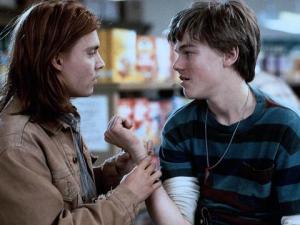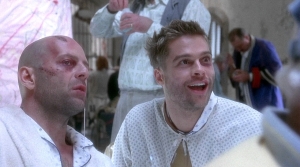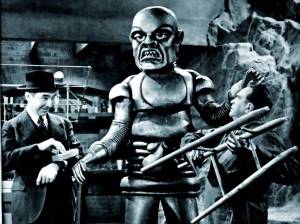Rating: 4/5
“Okay, so you’re probably going, ‘Is this like a Noxzema commercial or what?’ But seriously, I actually have a way normal life for a teenage girl.”
It’s hard to remain objective about Clueless. I can’t think of a single slumber party of my youth that didn’t include this (or The Craft, though usually both); I first watched it when I was ten, didn’t understand half of the language or references, and developed an early crush on Paul Rudd that has continued to this day. Along with Zoolander, it’s easily the most quotable movie I know. Safe to say, I consider it a modern classic.
Loosely based on Jane Austin’s novel Emma, Clueless is the ultimate chick flick. Cher (Alicia Silverstone) is a fifteen (almost sixteen) year old living a charmed existence in Bel Air; her father’s an angry, high-flying lawyer, her mother died in a freak accident during liposuction. Cher passes her time shopping, socialising, and manipulating the people around her, but she’s not a nasty person – she’ll blag and beg and bat her eyelashes at teachers in an attempt to improve her grades, but it’s never out of spite or malice. It’s surely this fact that keeps our sympathy: as perfectly blonde, rich and popular as she is, she means well. She’s a likeable character, so it’s possible to watch her root through her incredible revolving, colour-coordinated, gigantic closet full of clothes and have only the slightest pang of jealousy. The fact is, although she seems self-assured and fully capable of recognising other peoples’ naivety, she is utterly clueless, and it’s endearing rather than annoying.
It’s strange watching Clueless now, with its huge mobile phones, flash convertibles, and micro-mini skirted ensembles, because everything looks so dated (and, it’s only fitting that the film was watched on good, old fashioned VHS). The boys have floppy hair, Cher’s pen has a fluffy bobble on top, and Ren and Stimpy ruled television. In fact, the only thing in the film that hasn’t aged is Paul Rudd who, almost twenty years later, looks almost identical. But it’s a nostalgic delight – even for those of us who never enjoyed such luxuries as a Bel Air lifestyle. Like Cher, the film seems to be firmly situated in its own little microcosm. Are there really schools like hers, where fifteen year old girls compare nose jobs and the rich, pampered, spoiled brats ignore their teachers and learn nothing? Well, to be honest, maybe. But while the reality sounds more depressing than appealing, Cher’s life is inviting. It’s ludicrous – the clothes alone are a thing to behold – but it does look like fun. Hollow, but fun.
What makes Clueless so good – genuinely good, not guilty-pleasure good – is that it is actually rather clever. It’s got a great 90’s soundtrack and a razor-sharp script, filled with quick wit and humour. Writer-director Amy Heckerling’s dialogue is filled with pop-culture references, so much so that it becomes almost a language of its own, with its Betties (pretty girls), Barneys (ugly boys) and Baldwins (eligible men). Its cast, including Breckin Meyer (Rat Race, lots of stuff with Seth Green), the late Brittany Murphy (8 Mile), Donald Faison (Scrubs), and Wallace Shawn (the voice of Rex from Toy Story), are all a delight, while Silverstone is the perfect combination of wide-eyed innocence and precociousness. Without a strong performance from its lead, Clueless could flounder, but she excels in the role; her voice-over musings are catchy and hilariously empty-headed, but she is sympathetic throughout. Her complete lack of awareness of the havoc she’s wreaking around her, from her disastrous driving lesson (in which her most “responsible ensemble” consists of micro-mini, see-through shirt, and platform shoes) to her constant meddling with other people’s romantic lives, is thoroughly entertaining to watch, especially when we are safe in the knowledge that, this being a chick flick, she will learn a valuable life lesson and find romance for herself just in time for a happy conclusion.
I wonder, do teenagers still watch Clueless at slumber parties today? Perhaps it is no longer truly appreciated by these new generations, who look at Bella Swan as being aspirational (and I say that as a Twilight fan). Cher may be “totally clueless” in many respects, but she’s actually a rather strong character – she won’t submit to peer pressure, she looks after her father, she’s saving her precious virginity for someone worthwhile and, despite her misguided belief that the survivors of the Pismo Beach disaster need caviar and skiing equipment, she means well. She wants to be more than an air-headed shopper – quite a respectable ambition, considering the hoards of desperate females parading themselves on reality television, being praised for their ignorance and sluttiness. But, I digress. Because really, Clueless is great because it’s so much fun. It’s constantly entertaining and endlessly quotable; silly, but not too silly, clever, but not too clever. And, let’s not forget, its adaptation style paved the way for the likes of Ten Things I Hate About You. Now, I’m off to the mall.









